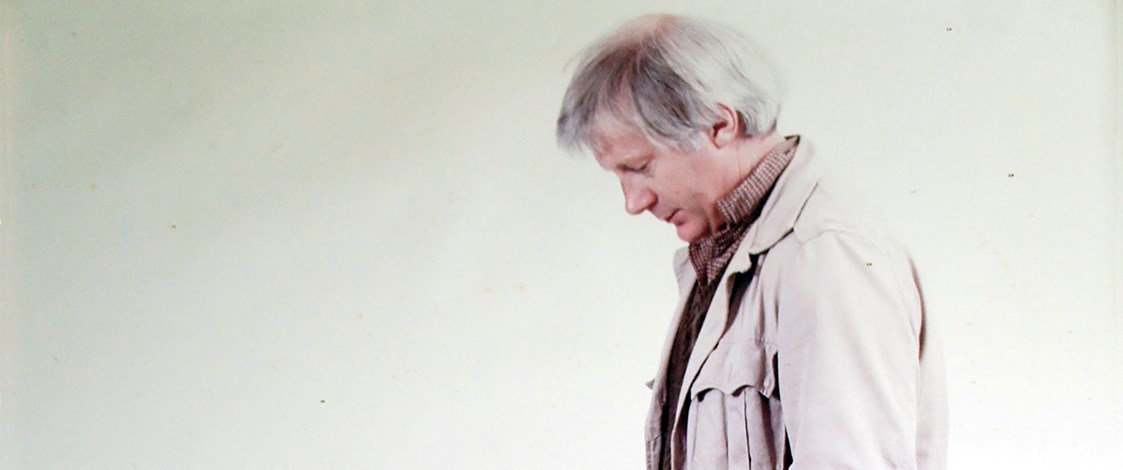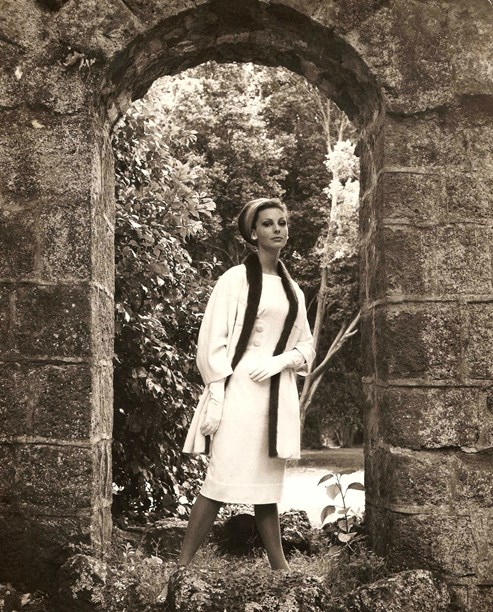Stories
Michael Gillies
1937-2019

Fashion photographer Michael Gillies, inspired by mid 20th-century greats Helmut Newton and David Bailey, stepped up to the camera and captured many iconic moments in the New Zealand fashion scene of the 1960s.
Michael grew up in central Auckland but it wasn't until he was 21 years old and working in Australia that he started taking photos. "I was in Mildura picking grapes to make some money so I could get back to New Zealand. I picked up a photography magazine and was hooked."
On his return to New Zealand he found work with the newly launched Vogue New Zealand. He stood out, says the magazine's former fashion editor Michal McKay, because he sought to truly understand the clothes he saw through his lens. "He interpreted clothes, and his images would depend entirely on them," she says. "We’d talk about what the mood of the clothes were, whether they were formal, or informal, whether they were sporty or whatever, and he would reflect that in the shoot."
Michal recalls with nostalgia a time when photographers used "proper cameras" and colour saturated GAF film, something they were "all enamoured with", whilst remembering, too, that an editor knew who was boss at a photo shoot. "What was going on behind those black hoods, goodness know what, you had to just take it. Unless you were given entrée by the photographer to stick your head under that black hood and have a look yourself. It would ensure you had to have absolute faith."
Michael had enormous respect for Vogue and recalls an issue where, along with model Anne McClurg, "practically all the advertising and editorial was us".
New Zealand Woman’s Weekly’s Max Cryer tells of a man who had a great respect for photography. "Michael wasn’t a fashion person himself. In terms of his own presentation of dress, he was very informal, and for anyone involved with a high level of glamour photography and high end fashion, Michael was the most unfashionable person you could possibly find. He was a Kiwi bloke. But when he was on his assignments, he could form an impression of how it should go, and he could guide the models towards the scenario to make them comfortable, and fit the impression he wanted and the result was always first class, it was always exactly what was needed."
Max says Michael’s respect of his industry was evident and he respected the other professionals he worked with. He regarded it as a business and his job was to present the business in the best possible way. His photographic assignments captured the elite of New Zealand models of the era, all of whom Max describes as "really quite famous" at the time. This illustrious list includes Anne McClurg, Jackie Holme, Elaine Hammond, Else van den Muysenbergh, Glynis McNicholl, Ana Nielson, Shirley Pater, Tina Grenville, Maysie Bestall-Cohen, Judith Baragwanath and Carlene Spencer.
Anne modelled for Michael regularly. Michael says "I had a studio flat in Parnell and Anne just turned up one day, because it was difficult for her to get photographers, and I leapt upon her with glad cries. We never stopped working together, she was great."
The feeling was mutual, Anne says. "He was very creative, and very inspired by overseas photographers, particularly Helmut Newton, whom he admired very much."
Michael, who once glimpsed Helmut working in Melbourne as he passed in a tram, says Helmut was 'very clever'. "It looked as though Helmut's pictures were kinky, but there was nothing kinky about them really."
One of Michael’s photos of Anne was taken at the 1963 New Zealand Wool Board Awards where she was wearing the winning garment designed by Barbara Herrick of Babs Radon.

Michael Gillies photographed Anne McClurg wearing the 1963 New Zealand Wool Board Award winning design by Babs Radon. Image © Michael Gillies.
Anne believes Michael was most proud of his photos for Vogue New Zealand, which was published from 1957 to 1968. Michael was the photographer for the first issue that had a 100% New Zealand editorial, garments, models and photographer. The magazine's Australian based editor Sheila Scotter had travelled over to "make sure we were all up to scratch". Anne recalls that the shots were beautiful and Sheila was thrilled. "We were all thrilled. And I think that probably would be the thing Michael was most proud of ... achieving that. Being good enough and recognised on both sides of the Tasman."
Michael's photos often appeared in Vogue New Zealand. Image © Image © The Condé Nast Publications Ltd.
Michael liked the model to be able to move in front of the camera. "He would bounce around all over the studio, taking photos from this angle, and that angle, climbing on stairs. He was a very active photographer," Anne recalls.
Anne believes Michael has a distinctive voice in his work that remains today. "No one else was really doing that kind of work in the early '60s."
Sir Bob Harvey, then co-owner of the Auckland advertising agency McHarman and Associates and a sometimes "smooth looking guy" model for Michael, echoes the sentiment, saying that he was hugely talented. "He knew what he wanted and would go to great lengths to get it. His eye gave the shot the class that was his. He was passionate about his style and was very ambitious. But he was not always easy to work with. He could be grumpy and rude if he didn’t agree with the client or the job. He was an enormous control freak with enormous talent."
In 1967 Michael sold his business to William Double and Barry McKinley and travelled to London where he worked for almost a decade, taking photos for Elle, Honey and Woman’s Day and collaborated again with Michal McKay, who was by this time fashion and beauty editor for Good Housekeeping.
When he returned to New Zealand in the late 1970s Michael found that the scene had changed. "I found fashion photography here very stifling because everybody wanted everything perfect. The clothes hanging perfectly, nothing like the wonderful stuff you see on television at the moment, ads where people are actually wearing the clothes, relaxed." He moved into advertising photography, with clients including Montana Wines.
Text by Belinda Nash. Banner photo © Michael Gillies.
Last published June 2017.